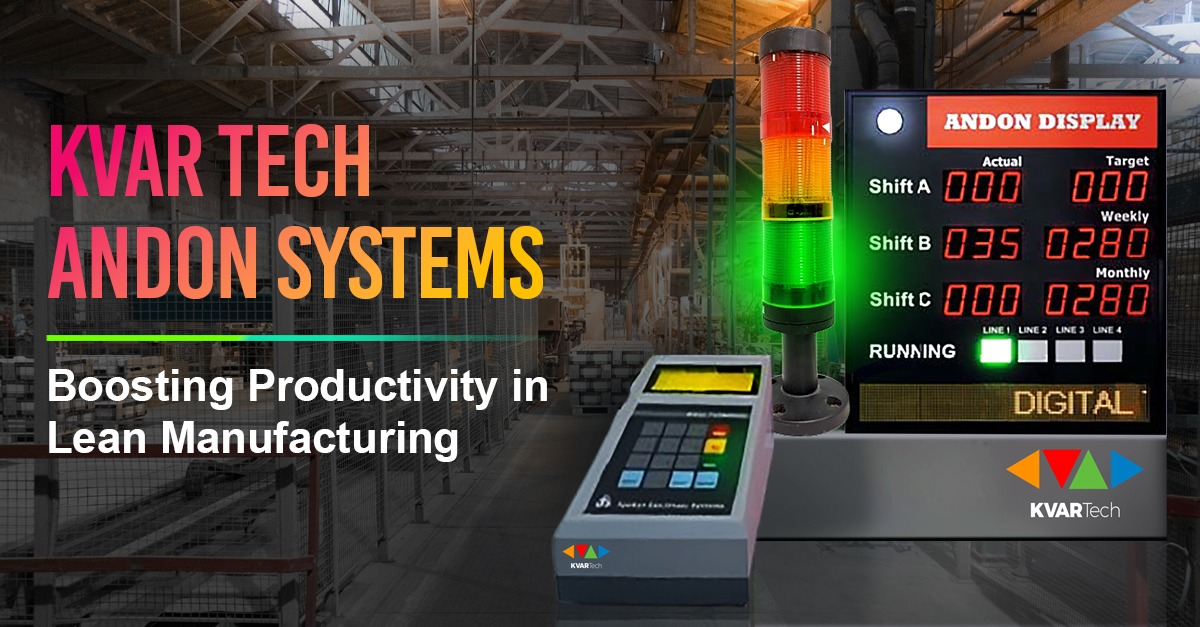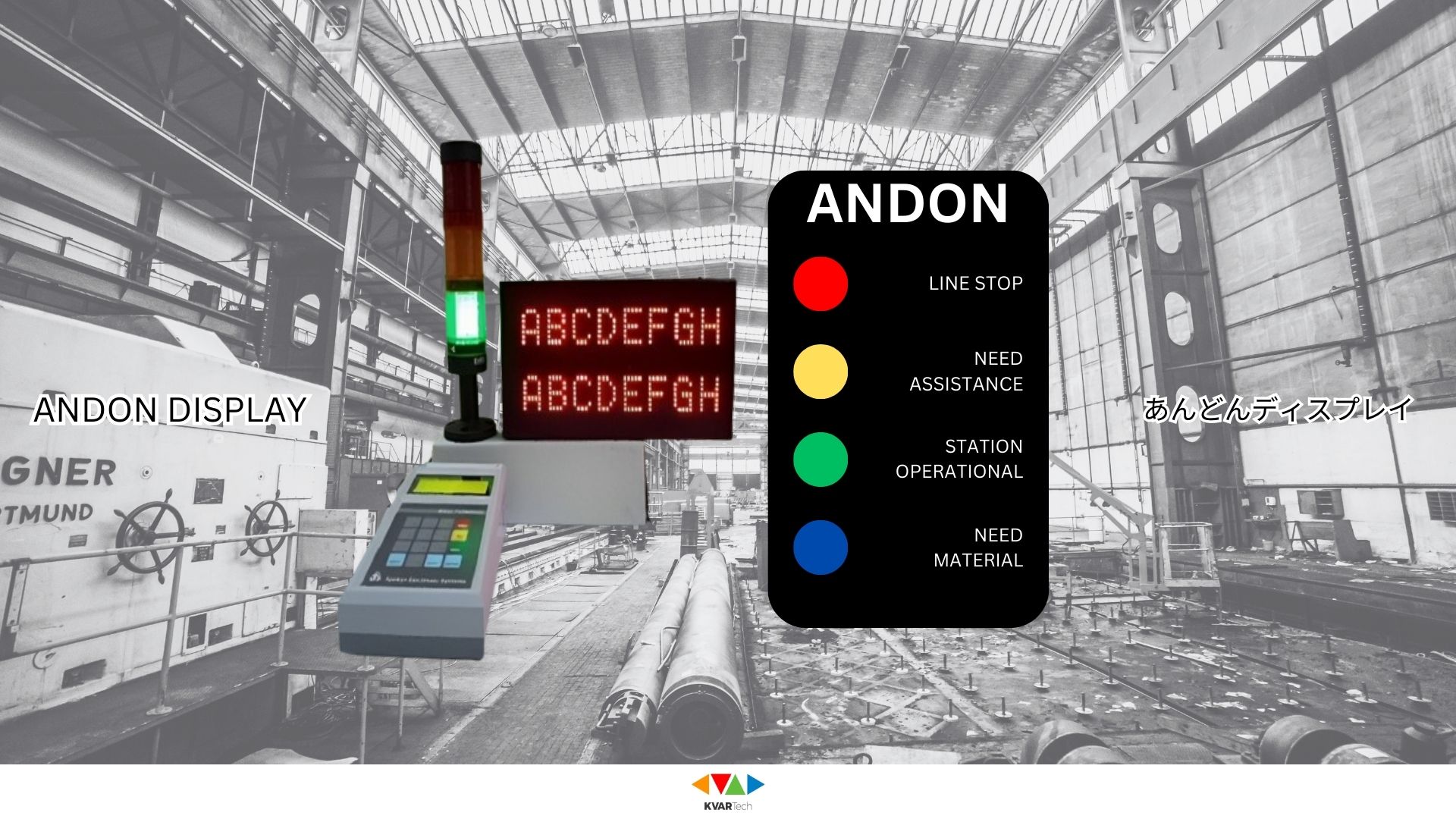In the world of manufacturing, efficiency, and quality are essential for success. To achieve these goals, many manufacturers have turned to lean manufacturing methodologies, with Andon systems being a key tool in their arsenal. The term "Andon" originates from the Japanese word for "light" or "lamp," and it refers to a signaling system used to alert operators and managers of any problems or issues on the production line in real-time. By promptly identifying and addressing these issues, Andon systems play a crucial role in boosting productivity and driving continuous improvement in lean manufacturing environments.
UNDERSTANDING LEAN MANUFACTURING
Before delving into the specifics of Andon systems, it's important to have a clear understanding of lean manufacturing. Lean manufacturing is a systematic approach that aims to eliminate waste and maximize value in the production process. It focuses on continuous improvement, efficiency, and quality, ultimately leading to enhanced customer satisfaction and reduced costs. Lean manufacturing principles, such as the elimination of non-value-added activities and the optimization of workflow, form the foundation for the effective implementation of Andon systems.
THE PURPOSE AND FUNCTION OF ANDON SYSTEMS
Andon systems serve as a communication tool in lean manufacturing environments, ensuring that everyone on the production floor is aware of the status of the production line. These systems help to streamline communication, improve quality control, and facilitate quick problem-solving. Andon boards, which often display a comprehensive set of signals and key performance indicators (KPIs), enable production workers to effectively communicate and address issues as they arise. By promptly stopping production, when necessary, Andon systems prevent the continuation of defective products, saving time, resources, and costs.
IMPLEMENTING ANDON SYSTEMS
The implementation of Andon systems in manufacturing facilities can take various forms, depending on the specific needs and processes of the organization. Common types of Andon systems include cords, lights, and boards.
• Andon Cords
Traditionally, Andon cords were used in the automotive industry, where pulling the cord would activate a kill switch, halting the production line until the issue was resolved. This physical action allowed operators to alert supervisors and managers of problems quickly. While Andon cords are still in use in some manufacturing environments, technological advancements have led to the adoption of more automated systems.
• Andon Lights
Andon lights provide a less disruptive and more targeted approach to issue notification. These lights, often stacked with different colors indicating different types of problems, can be activated by pressing a button. For example, a blue light might indicate a need for supply restocking, while a red light could signal an immediate need for assistance in resolving an issue. Andon lights help operators and supervisors identify and address problems efficiently without interrupting the entire production line.
• Andon Boards
Andon boards, displayed prominently in common areas throughout the manufacturing facility, serve as a collective notification system. These boards provide real-time updates on critical operational information, such as quality defect rates, department productivity, and production output. By visualizing this data, Andon boards enable operators, supervisors, and managers to make informed decisions and take appropriate actions to optimize production processes.
• Digital Andon Systems
With the advent of Industry 4.0 and the increasing digitization of manufacturing processes, many lean manufacturing businesses have embraced digital Andon systems. These systems leverage interconnected machines and real-time data to automatically detect and notify operators, supervisors, and relevant teams of production issues. Digital Andon systems offer enhanced visibility, efficiency, and accuracy, enabling faster problem resolution and continuous improvement.
EMPOWERING OPERATORS AND PROMOTING CONTINUOUS IMPROVEMENT
The success of Andon systems relies heavily on empowering operators to take action when issues arise. This requires creating a culture that encourages operators to use the Andon system and provides them with the authority and responsibility to stop the production line when necessary. By trusting operators to make judgment calls and address problems immediately, manufacturers can prevent major issues from escalating and ensure that the production process runs smoothly.
THE BENEFITS OF ANDON SYSTEMS IN LEAN MANUFACTURING
Implementing Andon systems in lean manufacturing environments can yield numerous benefits, both in the short and long term. Some of the key benefits include:
1. Improved Production Efficiency: By promptly addressing issues and preventing the production of defective products, Andon systems eliminate wasteful activities and optimize workflow, leading to increased productivity and efficiency.
2. Decreased Waste: Andon systems help identify and address waste in the production process, reducing costs associated with rework, scrap, and inefficiencies.
3. Enhanced Product Quality: By stopping production when problems arise and facilitating real-time root cause analysis and solutions, Andon systems contribute to improved product quality, ensuring that customers receive high-quality products consistently.
4. Reduced Downtime and Costs: Timely detection and resolution of issues prevent prolonged downtime and costly repairs, enabling manufacturers to fulfill orders efficiently and minimize production costs.
5. Continuous Process Improvement: Andon systems emphasize the identification of problems and the implementation of solutions, fostering a culture of continuous improvement and driving long-term enhancements in the manufacturing process.
6. Empowered Operators and Improved Teamwork: By empowering operators to take action and actively participate in problem-solving, Andon systems promote a sense of ownership, accountability, and teamwork, leading to a more engaged and efficient workforce.
CONCLUSION
Andon systems play a crucial role in lean manufacturing by facilitating effective communication, problem-solving, and continuous improvement. These systems empower operators to alert supervisors and managers of issues in real-time, enabling prompt resolution and preventing the production of defective products. By implementing Andon systems, manufacturers can enhance productivity, reduce waste, improve product quality, and foster a culture of continuous improvement. When combined with other lean manufacturing principles, Andon systems contribute to the overall success and competitiveness of manufacturing businesses in today's dynamic market.
-min.png)




